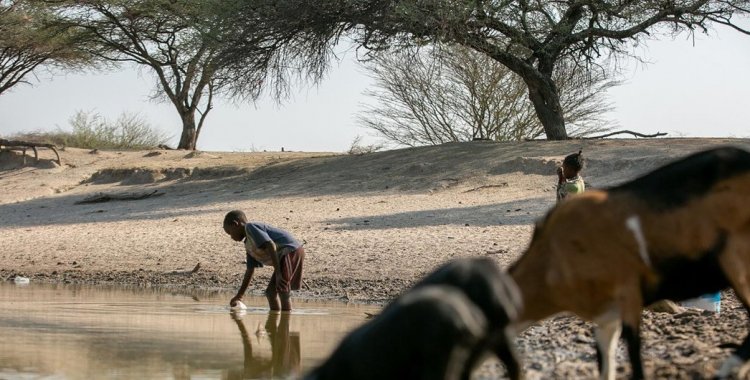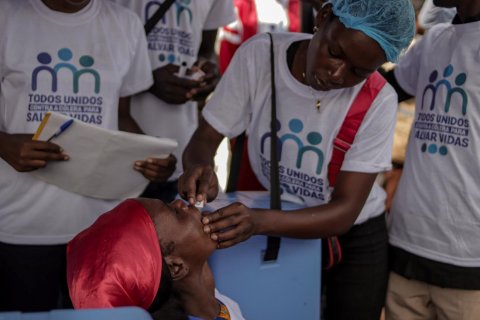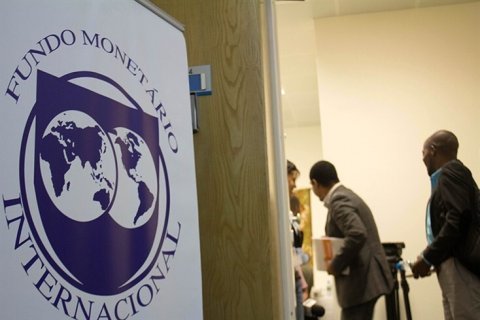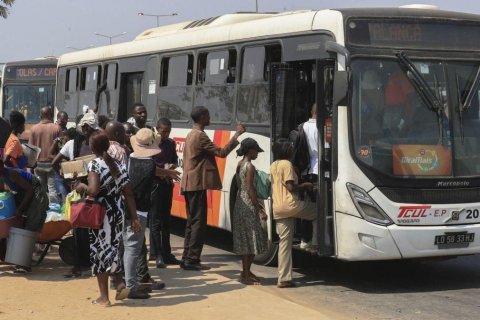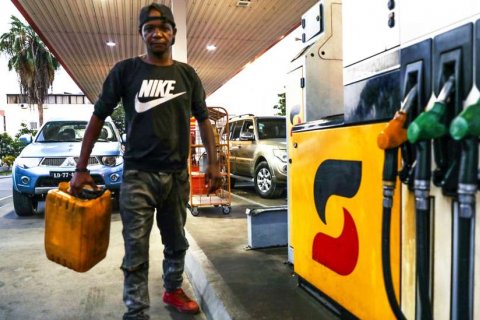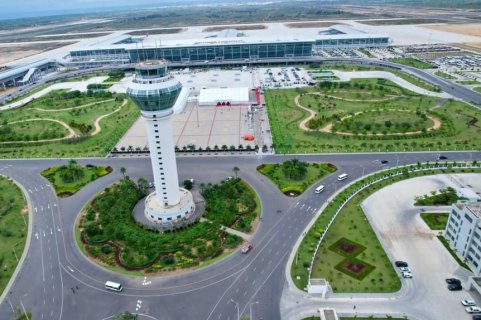This scenario affects nearly 5000 inhabitants of this village, in the municipality of Namacunde, province of Cunene, a town in the south of Angola, which has been affected by a long drought and consequent water shortage.
Onanime, which is about 40 kilometers from Ondjiva, the provincial capital, is considered the epicenter of Guinea Worm or guinea worm, a disease transmitted by ingesting water contaminated with the parasite's larvae.
Due to the scarcity of water in the region, people resort to small rainwater reservoirs, also called "chimpacas", with water unfit for consumption and competing with animals for the liquid.
In one of the Onanime dams, children and adults gather with drums and buckets of up to 20 liters with which they remove and transport the water, turbid and muddy, from where the animals on the opposite side drink.
"We drink, cook, wash and bathe with this water every day, because we have nowhere else to find water", Júlia Mupedina, 23, told Lusa, as she left the "chimpaca" with her 20-liter drum.
Next to Júlia was little Érica, 11 years old, who was carrying a container on her head with "water to drink".
At least 47 cases of Guinea Worm have already been registered in the locality, but only in animals, mainly dogs, the main carriers of the worm, which also use the chimpaca waters, according to the municipal director of Health of Namacude, Eduardo Hisikusitya.
Local residents say they are living in a precarious situation as there is a lack of almost everything, from water and food, to health centers and schools, leaving no other alternative for children who study intermittently under bushes.
The rural region, which is quite arid and has high temperatures, is hit by floods when it rains heavily due to the overflow of the Cuvelai River basin, which often prevents the normal course of children's classes.
"Here the people live poorly. Point number one, we have the water problem, point number two we have the health problem, people walk a long distance in search of health and in cases of complications the person can lose their life along the way", said Elias Chimonu, one of the village officials.
According to the same source, traditional authorities (sobas and centuries) "always shout" at the authorities, but they are "not resolving anything".
"We say this because people are always shouting, as they see the water we are consuming is actually drinking donkey pee, because where a donkey drinks is where people drink, this is a much bigger problem", he said.
"That's why we are repeating that they do everything to help us with this drought problem, much more so here in our region. Hunger, thirst, we don't have hospitals, schools, our children study, but very badly under the bushes and in the weather When it's rainy, no one studies anymore", he added.
Elias Chimonu also said he was "tired" with the authorities' promises: "The authorities promise things they don't do [...] we have problems, they say we already have knowledge, but the years go by and we don't see any change", he insisted.
The picture of the village of Onanime was also portrayed by Venâncio Muanhe Telangue, 73 years old, pointing out the lack of water and food as the population's main challenges, even considering that the region was "abandoned" by the authorities.
"Here we live precariously, we don't live very well due to the lack of water, there is a lack of a lot of things here, especially water and food," he said.
In Namacunde, one of the six municipalities of Cunene, the localities most affected by Guinea worm are Onanime, as well as Olufua, Epolome Ofenda, said Eduardo Hisikusitya.
The municipal health official recalled that the region recorded the last case of Guinea worm (in a dog) last September, and recognized that water scarcity contributes to the spread of the disease.
"There were several interventions on the ground, from the mass provision of education to communities, with measures to prevent this disease, distribution of filters at home [...] in order to contain contamination", he explained.
The municipal administrator of Namacunde, Cristina Naheme Omuno, highlighted the actions carried out by the five surveillance brigades in the region to contain the disease, noting that actions are underway to minimize water scarcity.
"This is a reality (water shortage), but every effort is being made to little by little minimize the situation of water shortage, such as works already completed within the scope of PIIM [Integrated Plan for Intervention in Municipalities] ", he told Lusa.
According to the World Health Organization (WHO), the province of Cunene has become the central nucleus of Guinea Worm, established as endemic since July 2020, with recorded cases of human infections in 2018, 2019 and 2020.
A multisectoral team, led by the WHO representative in Angola, Humphrey Karamagi, worked in Cunene in recent days and visited the Onanime region.
Members of the WHO, the Angolan Ministry of Health and Cunene Health authorities also came together as a community, calling for regular education to contain the virus.

